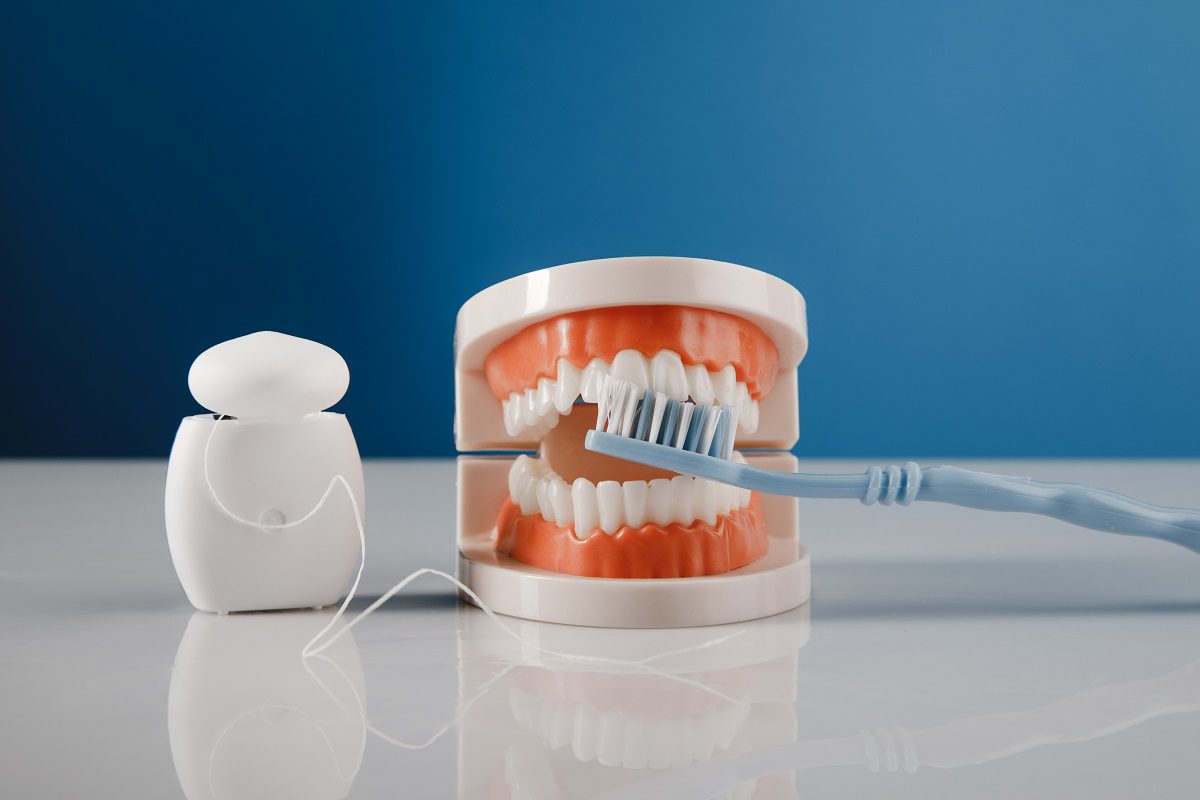Teeth-brushing, face-washing, and hair-combing are daily habits. Dentists recommend brushing and flossing teeth for optimal oral health. Biannual dental cleanings remove plaque, tartar, and other tooth particles, but excellent home care can help. Brushing & Flossing keeps the mouth healthy, enhance the smile, and prevent serious infections. But, do you brush properly? Your pearly whites play an essential part in everyday activities, from chewing food to making friendly grins. Follow these tips for Brushing & Flossing, and you'll be on your way to keeping your teeth and smile in top shape.
Proper Brushing Tips
Tooth brushing removes plaque and bacteria from teeth and gums. Plaque can cause cavities, tooth decay, and periodontal disease; you can avoid it with proper brushing. Ask your dentist for their preferred method of cleaning your teeth using a manual toothbrush, and be sure to follow their advice.

- Right Brush: Toothbrushes should be no older than three months and have soft, rounded-end bristles. A tiny brush head and soft bristles are necessary to thoroughly clean the mouth and the arm to the teeth and gums. According to the American Dental Association (ADA), toothbrushes with revolving or oscillating heads are more effective than other toothbrushes in cleaning teeth.
- Right Toothpaste: Different toothpaste varieties attack cavities, whiten teeth, and improve sensitivity. Confused? Consult your dentist or hygienist about toothpaste.
- Duration: Spend at least two minutes cleaning your teeth according to the prescribed morning and night method; you should brush each part of your mouth for 30 seconds.
- Pressure: Don't use too much force when brushing or scrubbing your teeth since this might harm the gums and the tooth enamel.
- Technique:
- Start with the teeth's exterior surfaces. It is best to go tooth by tooth to avoid missing any spots. Do not rush yourself: Brush upper, lower teeth, and gum line gently with a small circular motion.
- Tip your brush 45 degrees to the left or right and remove plaque and food particles from the gum line.
- Move the toothbrush gently back and forth with short, tooth-wide strokes.
- Brush your teeth's inner surface. Because the inside surfaces of your teeth aren't as obvious, it's easy to overlook them - yet they are just as susceptible to plaque.
- Brush your teeth's biting surfaces. Remember to brush the crowns of your back teeth with short back and forth strokes, where food is more likely to become lodged.
- To eradicate odor-causing germs, brush your tongue.
Proper Flossing Tips
Flossing prevents cavities and periodontal disease and reduces gum pocket depth. While many people clean their teeth twice daily, Flossing is less prevalent. Dentists encourage daily Flossing, yet many adults don't. Flossing reaches interdental areas, which are hard to reach with a toothbrush.

- Type: It doesn't matter what flavor or type of floss you use; what matters is how easy and comfortable it is to use. Get a water flosser if you struggle with regular floss. Water flossers are a high-maintenance alternative to regular Flossing. It's a portable gadget that blasts water between the teeth in a narrow stream.
- Length: To ensure a clean piece of floss for each tooth, cut a piece of floss about 18-24 inches long.
- When: Flossing before brushing removes food and plaque, giving fluoride toothpaste a cleaner surface. After brushing, Flossing helps disperse fluoride between teeth. The ADA says it doesn't matter which order you brush and floss as long as you do both daily.
- Technique:
- With your hands, 2-3 inches apart, wrap the floss around the middle finger of the left hand and the middle finger of the right hand.
- In between the teeth, carefully move the floss up toward the gum line.
- In a C-shape motion, curl it towards the tooth as you approach the gum line.
- Interdental plaque and debris may be removed by carefully moving the floss up and down between teeth.
Finally, once you've mastered the appropriate brushing technique, it takes daily practice to make it automatic. It's one of the simplest ways to keep your teeth and gums healthy.
Contact your dental care provider in Pinole, Dr. Azadeh Hosseini, and Dr. Ghazal Hosseini, at Top Pinole Dental to learn tips for brushing & flossing.
Resource:
How To Properly Brush And Floss?
This media/content or any other on this website does not prescribe, recommend, or prevent any treatment or procedure. Therefore, we highly recommend that you get the advice of a qualified dentist or other medical practitioners regarding your specific dental condition
1500 Tara Hills Dr., Suite 104A, Pinole, CA 94564
Monday – Saturday 8:00 AM to 5:00 PM
